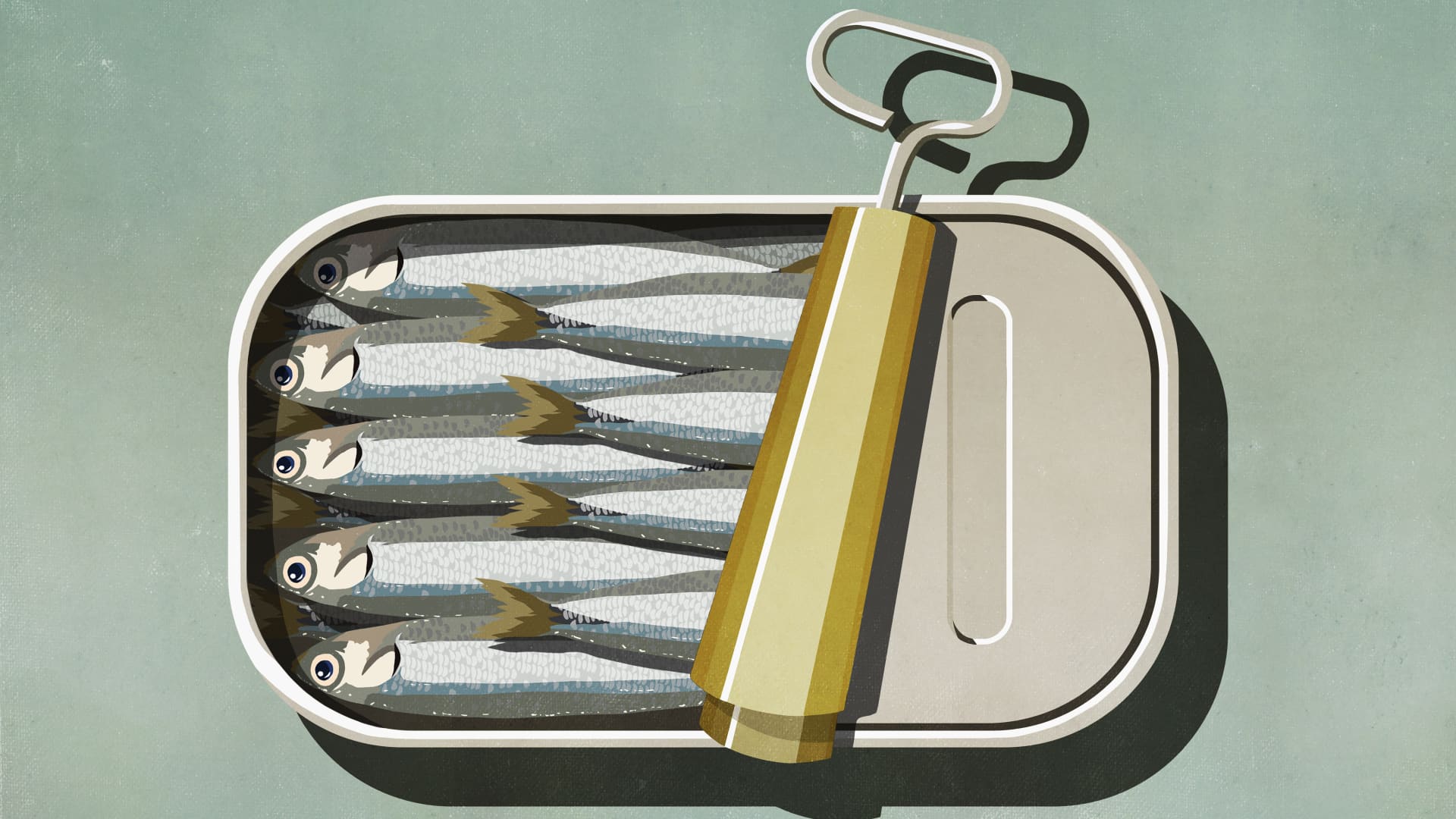More and more people are adding fish into their diets for the heart-healthy omega-3 fatty acids. But it may be time to skip the salmon and tuna, and reach for foods lower on the seafood chain like sardines and clams instead.
Shifting your seafood diet to incorporate mainly smaller fish and bivalves can up your intake of micronutrients that people are typically deficient in, including zinc, iron, vitamin B12 and omega-3 fatty acids, says Christopher Golden, professor of nutrition and planetary health at the Harvard T.H. Chan School of Public Health.
“Of all of the different equestrial and aquatic-based foods, small fish are the best source of nutrients for these types of things on a per-weight basis,” Golden tells CNBC Make it. “So, although they are underutilized, they’re really good at delivering those sorts of nutrients.”
Bivalves, like mussels, are also a “really healthy choice,” Golden notes, and they’re great sources of zinc and calcium. Bivalves are “a type of mollusk, such as an oyster, that has its body inside two connected shells.”
Here’s what Golden recommends adding to your diet to replace foods like red meat and farmed salmon.
- Herring
- Mackerel
- Sardines
- Anchovies
- Clams
- Oysters
- Mussels
- Scallops
That being said, eating lower on the seafood chain is something you should consider for more than just nutritional value. There are other important reasons why it’s a healthy decision to make, says Golden.
Smaller fish and bivalves may have lower levels of mercury
While Golden is actively researching if there’s a significant difference between the mercury levels in smaller fish and larger fish, scientifically it is shown that when you eat foods that are higher on the seafood chain, “you’re going to have a greater risk of mercury toxicity within the foods that you eat and mercury exposure,” he says.
“Eating the smaller fish, you’re more likely to have a lesser mercury load than some of the larger carnivorous fish,” says Golden.
Bivalves, including clams and oysters, will also have much lower levels of mercury, especially in geographic regions with less pollution, he adds.
“Bivalves from healthy waters and small fish is really the direction to go,” says Golden.
Eating lower on the seafood chain is better for the environment
“These types of foods are the best possible sources of animal-sourced food from a sustainability standpoint,” Golden says.
Bivalves, specifically, are “nature-positive” because they don’t require feeding to be farmed, which is better for the environment, says Golden. They also filter water and capture carbon which can weed out pollution and contaminants within them, and provide “an ecosystem service,” he adds.
Another way to support the environment is by adding aquatic plant foods like seaweed and kelp to your diet. “Seaweed is low in calories, is a good source of fiber, and also contains iodine, a mineral required to make thyroid hormones,” according to an article by Harvard Health Publishing.
But it’s important to keep in mind, “where something is produced and how it is produced,” says Golden. “[It] is often so much more important than what the actual food is when it comes to seafood.”
For the best protection, you should follow the Food and Drug Administration’s guidelines for buying and preparing seafood safely.
DON’T MISS: Want to be smarter and more successful with your money, work & life? Sign up for our new newsletter!
Get CNBC’s free Warren Buffett Guide to Investing, which distills the billionaire’s No. 1 best piece of advice for regular investors, do’s and don’ts, and three key investing principles into a clear and simple guidebook.


